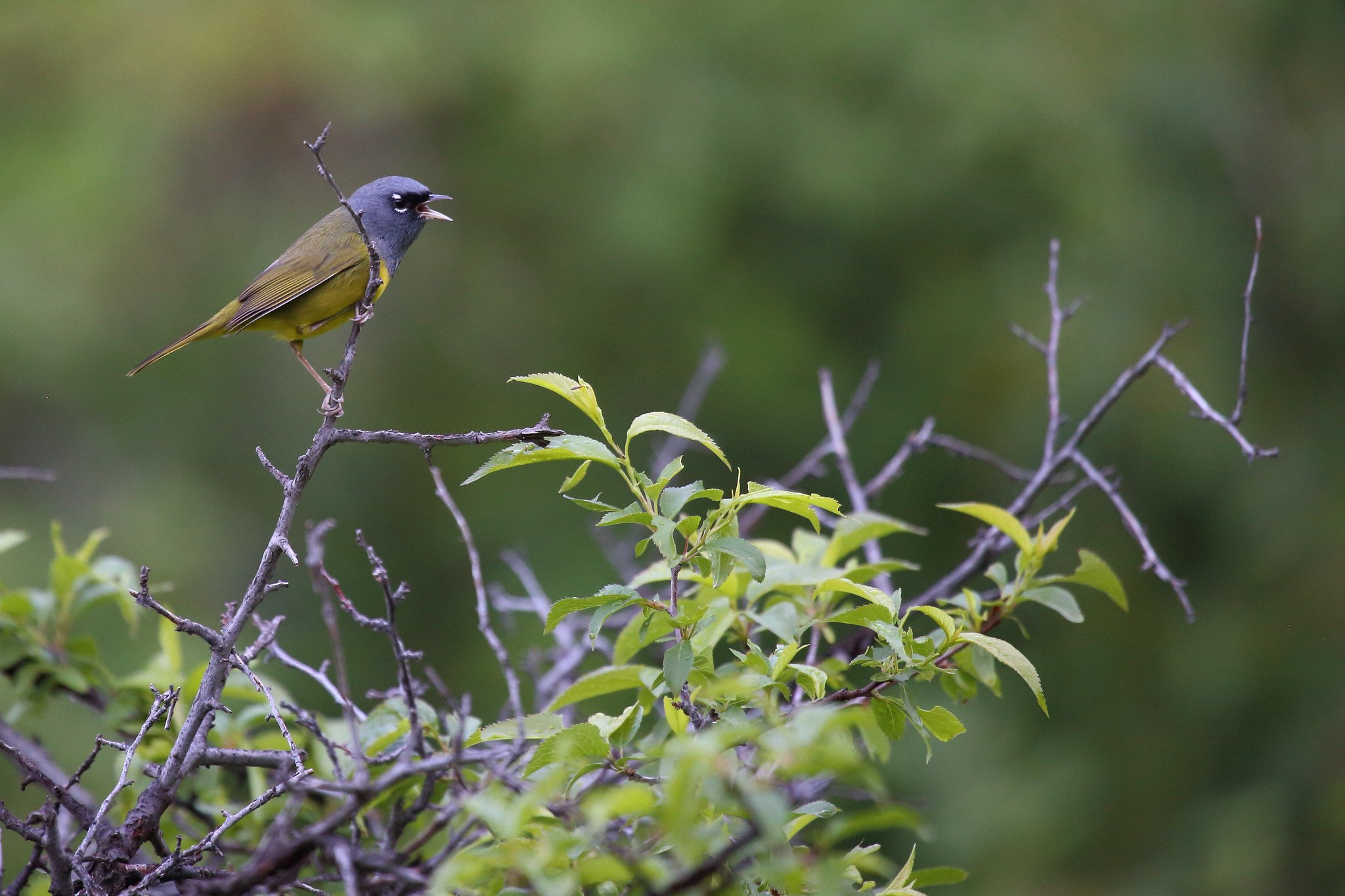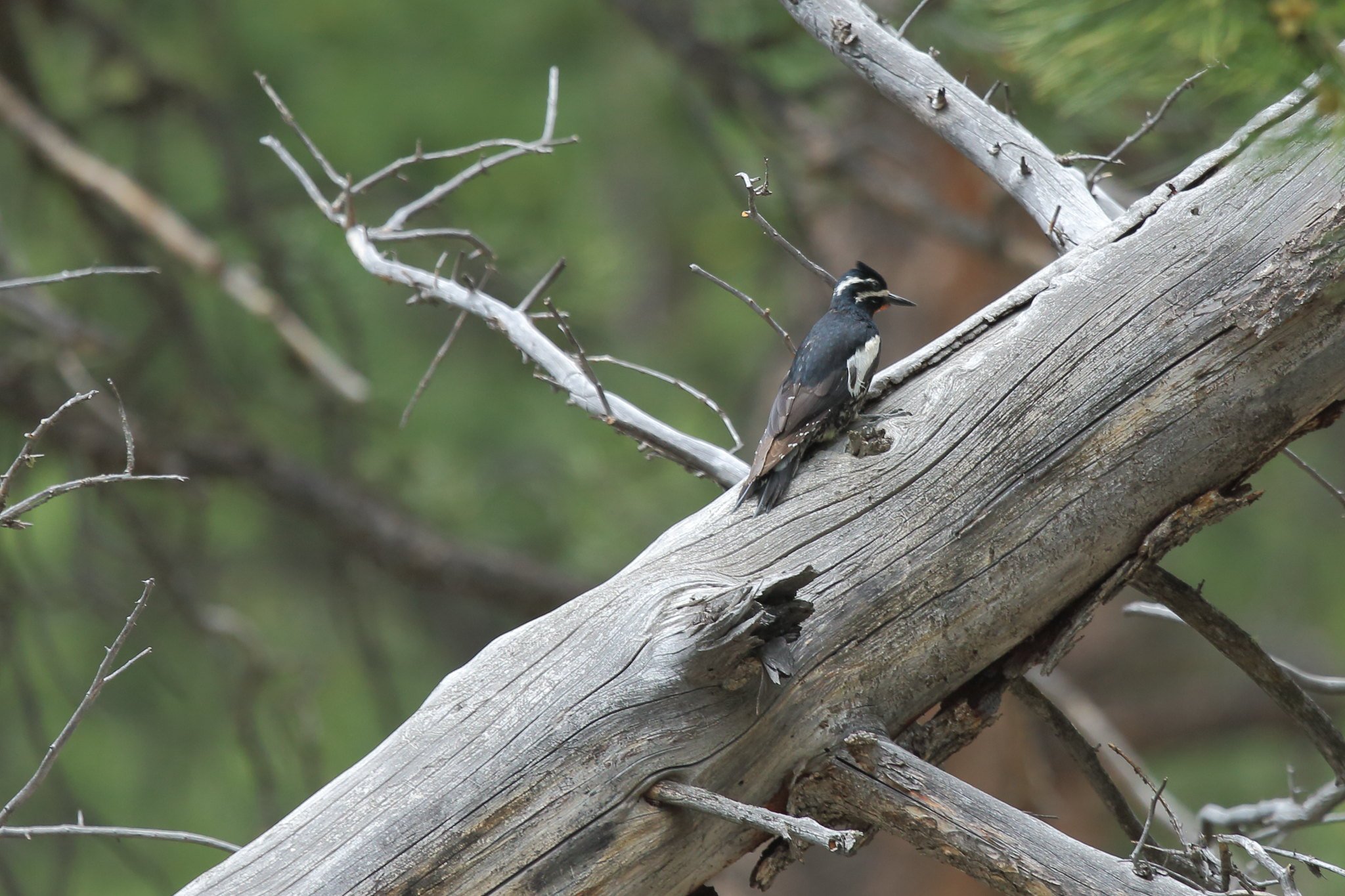
Costa Rica: Mountains
to the Pacific
Tour Costa Rica’s Central Valley, Volcanic Cordillera, Primary Rainforest and Pacific Lowlands!
Costa Rica is a wonderful introduction to neotropical birding, with amazing and comfortable eco-lodges, fabulous food and an outrageous diversity of wildlife including more than 800 species of birds and over 200 mammals. This itinerary offers a relaxed pace journey from San Jose’s Central Valley to the Pacific Coast to the high mountains. Along the way we’ll have two nights at the amazing La Selva Biological Station, summit two volcanoes, explore the coastal mangroves by boat and, of course, seek out the Resplendent Quetzal!
In addition to dazzling birds and wildlife, fresh fruit, rich coffee and locally prepared meals await! This trip is limited to eight guests.
Dates: March 17-26, 2025
Duration: 10 Days, 9 Nights
Cost: $4250 per person double occupancy ($500 single supplement)
Your Guide: Peter Burke and local guide
Highlights:
Explore the old-growth lowland tropical forest from the La Selva Biological Station
Summit the Poas Volcano to search for the endemic Coppery-headed Emerald
Ride the jungle gondola to view canopy birds and wildlife at eye-level
Birding in Carara National Park, the northern limit of the Pacific wet forest habitat
Explore the Tarcoles River by boat in search of mangrove species
Experience the forests at night with several guided night walks







Learn More About this Tour:
-
TRIP COST: $4250 per person
- $500 nonrefundable deposit to reserve your spot with the balance due on Dec. 15, 2024.- If you would like a private room, the single supplement is $500.
INCLUDED:
Guided birding with an excellent local guide for 10 days.
Lodging March 17-26 and all transportation excluding airport transfer upon arrival.
Mangrove boat tour on the Tarcoles River.
Meals beginning with dinner March 17 through breakfast on March 26.
Transfer to the airport in San Jose (SJO) on March 26.
Optics – I will have a Kowa 99mm scope available throughout the tour.
Entrance fees to all national parks.
NOT INCLUDED:
Flights to and from San Jose International Airport (SJO).
Lodging/Meals prior to or after the tour dates: Mar. 17-26.
Personal items such as alcohol with meals, laundry, etc.
-
Monday, March 17
Arrive in Costa Rica (SJO). It’s about a 30-min. taxi/Uber to the Hotel Bougainvillea that should cost about $35. We’ll meet at the hotel for a welcome dinner and tour orientation.
Tuesday, March 18
Morning bird walk and breakfast. You have the option to join in a sunrise bird walk on the hotel grounds where we should encounter some of the more common neotropic birds like Rufous-tailed Hummingbird, Tropical Kingbird, Blue-gray Tanager, Rufous-collared Sparrow and Costa Rica’s National Bird, the Clay-colored Thrush. Several North American migrants will likely be present, and we could see Red-billed Pigeon, Lesson’s Motmot, Hoffmann’s Woodpecker, Crimson-fronted Parakeet and Cinnamon-bellied Saltator as well.
After breakfast, we’ll bird our way to the lower foothills of the Central Volcanic Cordillera, arriving at the Tapirus Lodge located deep in the rainforest, adjacent to the Braulio Carrillo National Park. Here we might encounter Slaty-breasted Tinamou, Olive-backed Quail-Dove, Uniform Crake, Sunbittern, Ocellated Antbird, Tawny-faced Gnatwren, Dusky-faced Tanager and Tawny-crested Tanager. Our lodge is also home to the Rainforest Adventures Aerial Tram. From the gondolas we can view the canopy at eye-level, searching for species like Lattice-tailed Trogon, Cinnamon Woodpecker, Green Shrike-Vireo and mixed tanager flocks that are most often viewed from below.
After dinner there will be an optional night walk to look for poison dart frogs and see/hear owls, nightjars and other nocturnal wildlife. Pack a headlamp!
Wednesday, March 19
Journey to La Selva Biological Station. This morning, we’ll walk the trails one more time, perhaps crossing paths with a mixed flock containing Streak-crowned Antvireo, Checker-throated Stipplethroat, White-flanked Antwren, Western Woodhaunter, Brown-billed Scythebill, Ruddy-tailed Flycatcher and Scale-crested Pygmy-Tyrant.
A short drive along the base of the mountains will have us arriving in time for lunch at La Selva. This magical field study location, run by the Organization for Tropical Studies, offers easy access to primary tropical forest. If only the birding were so easy! Rain forest birding can be tough, but with luck and persistence we could well be rewarded with sightings of species such as Green Ibis, Semiplumbeous Hawk, Northern Black-throated Trogon, Rufous Motmot, Rufous-winged Woodpecker, Purple-throated Fruit-Crow and White-collared Manakin, to name just a few. Of course, we’ll also bird the open areas on the property looking for Cinnamon Becard, Snowy Cotinga, Black-throated Wren, Golden-hooded Tanager, Green Honeycreeper, Black-cowled Oriole and Olive-backed Euphonia.
We’ll spend the next two nights at La Selva surrounded by the sounds of the jungle with the sharp calls of Great Tinamous and the mournful howler monkey calls.
Thursday, March 20
A “Great” day at La Selva. With more than 400 species reported from the property, La Selva has great birding. Among the many, many birds we may find, Great Tinamou, Great Curassow, Great Potoo, Great Green Macaw, Great Antshrike and Great Kiskadee are all possible. If the weather conditions are favorable, we might get to witness the spectacle of hawk migration with hundreds, if not thousands, of Broad-winged, Swainson’s Hawks, and Turkey Vultures all soaring northward. Overnight at La Selva.
Friday, March 21
Journey to the Pacific Coast. After breakfast, we’ll ascend the northeastern slope of Poas Volcano, stopping along the way to look for some mid-elevation species like Green Hermit, the endemic Coppery-headed Emerald, Prong-billed Barbet, Silver-throated Tanager and Scarlet-thighed Dacnis. After cresting the ridge, we’ll drop back down into the Central Valley and continue to the central Pacific lowlands where we’ll stay at Hotel Villa Lapas. The hotel has some great birds like Marbled Wood-Quail, Spectacled Owl, Costa Rican Swift, Yellow-throated Toucan, Royal Flycatcher, Long-tailed Manakin and Rufous-and-white Wren, to name a few.
Saturday, March 22
Carara National Park. Here the southern Pacific wet forest habitat reaches its northern limit and we’ll be looking for species endemic to this part of Costa Rica and adjacent western Panama. Among these are Baird’s Trogon, Fiery-billed Aracari, Golden-naped Woodpecker, Black-hooded Antshrike, Chiriqui Foliage-Gleaner, Riverside Wren, and Spot-crowned Euphonia. Scarlet Macaw is a possibility.
The open understory in many parts of the park makes it easier to spot ground-dwelling species like Gray-chested Dove, Ruddy Quail-Dove, Scaly-throated Leaftosser, Streak-chested Antpitta and Black-faced Antthrush. King Vultures or Double-toothed Kites might be seen soaring overhead. Mixed flocks are where the action is, with species like White-whiskered Puffbird, Dot-winged Antwren, Tawny-winged Woodcreeper, Plain Xenops, Greenish Elaenia, White-winged Becard, Rufous-breasted Wren and Long-billed Gnatwren among others.
In the afternoon, we’ll explore the Tarcoles River by boat. There should be a good variety of shorebirds and waterbirds along with some species found only in mangroves: Rufous-necked Wood-Rail, Panama Flycatcher, Mangrove Vireo, the mangrove race of Yellow Warbler and the endemic Mangrove Hummingbird. Overnight at Hotel Villa Lapas.
Sunday, March 23
Ocean to Mountains. Our journey today takes south along the Pacific coast to Dominical, before turning inland and eventually climbing to an elevation of 11,000 ft. Here at the highest point along the PanAmerican Highway, we’ll make a short detour to look for Volcano Hummingbird, Timberline Wren and Volcano Junco. By late afternoon, we’ll drop down into the Savegre Valley in the Talamanca highlands where we’ll spend the next two nights. Overnight at Sueños del Bosque Lodge.
Monday, March 24
Resplendent Quetzal! Spotted Wood-Quail could well be the first sounds you hear in the morning. As we sip our coffee, we can sift through the hummingbirds with Lesser Violetear, White-throated Mountain-gem and Talamanca, Scintillant and Stripe-tailed Hummingbirds the most numerous. We’ll also look for Sulphur-winged Parakeet, Spot-crowned Woodcreeper, Torrent Tyrannulet, Rufous-browed Peppershrike, Black-faced Solitaire and Long-tailed Silky-flycatcher.
After breakfast, we’ll head to higher elevation to look for Resplendent Quetzal. Regional endemics here include Black Guan, Fiery-throated Hummingbird, Costa Rican Pygmy-Owl, Buffy Tuftedcheek, Silvery-fronted Tapaculo, Golden-browed Chlorophonia and Wrenthrush.
Some birding after dark might produce Dusky Nightjar, Bare-shanked Screech-Owl and perhaps even Unspotted Saw-whet Owl. Overnight at Sueños del Bosque Lodge.
Tuesday, March 25
Return to the Central Valley. In the morning we’ll bird on the lodge grounds before loading the van for our ride back to San Jose. We’ll make several birding stops along the way and enjoy lunch at a local restaurant. We’ll check into Hotel Robledal, a short drive from the airport, and enjoy a nice farewell dinner.
Wednesday, March 26
Departures. The hotel provides shuttle service to the airport starting at 5:00 a.m.
-
Please read through Rocky Mountain Birding terms and conditions here.
Tour Space is Limited, Book Today!
Questions? Please reach out through our Contact Page and we’ll be happy to tell you more about this fabulous trip!





